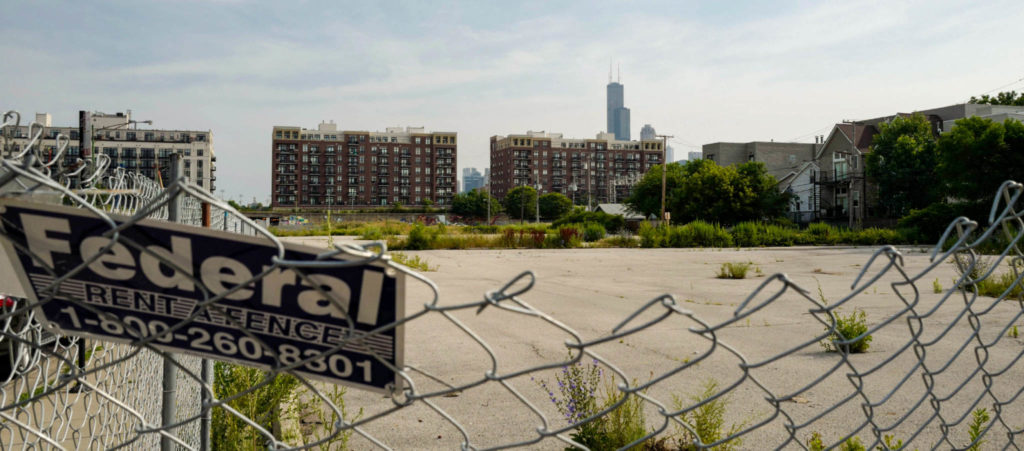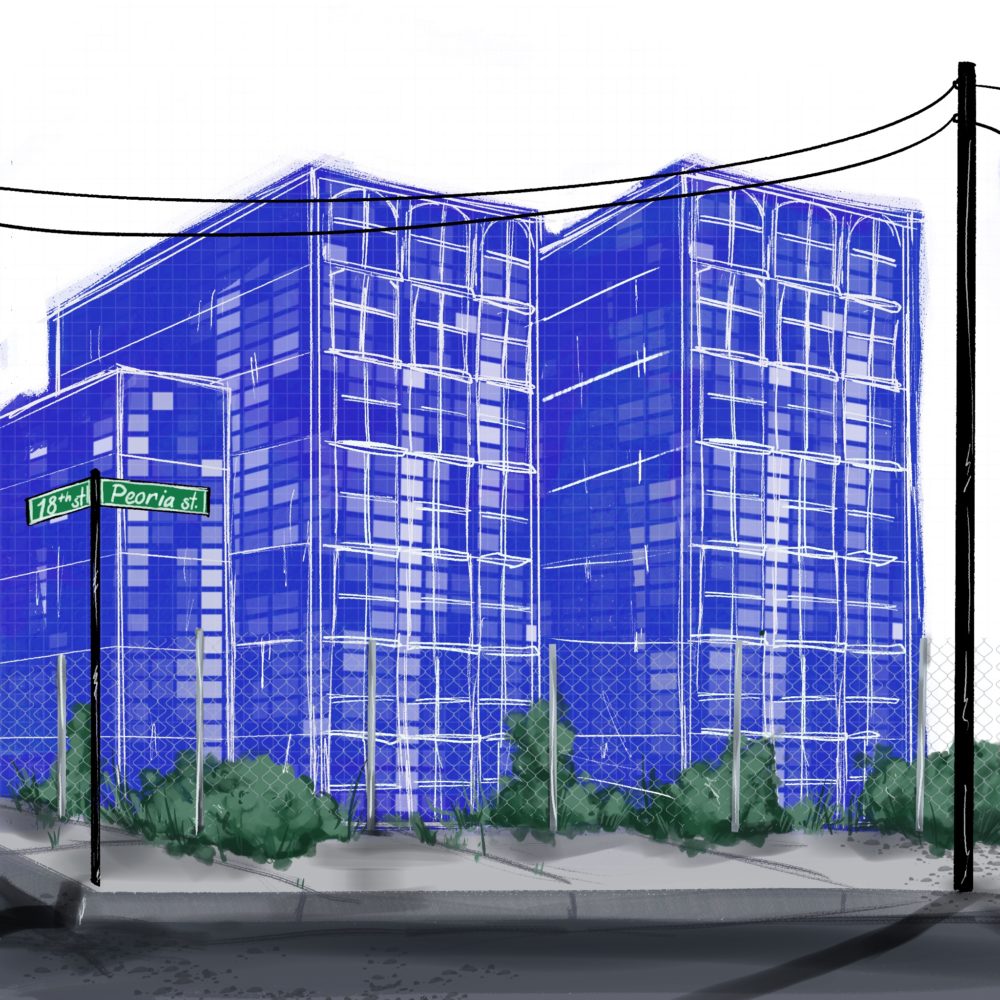On Monday, Mayor Lori Lightfoot and the Chicago Department of Housing (DOH) announced that the city’s affordable housing infrastructure will get more than $1 billion in the coming calendar year—the largest in Chicago history.
The DOH selected twenty-four new developments in which to create or preserve 2,428 affordable rental units across the city. Eighteen of the twenty-four developments are Equitable Transit Oriented Developments near CTA stations, and sixty-seven percent of those are located on the South and West Sides. The Chicago Housing Authority will add 426 affordable units across five separate developments.
The selected proposals are now entering a matrix of project underwriting, design review, zoning approvals and City Council approvals for public subsidy, according to a press release the mayor and DOH issued Monday. The release stated that the City anticipates that closing on the projects will occur within the next eight to eighteen months.
This surge of investment stems from the Chicago Recovery Plan and Mayor Lightfoot’s freshly passed budget, and is more than doubling the number of developments awarded and units built compared to the state’s 2019 Low-Income Housing Tax Credit (LIHTC) round of funding.
The LIHTC is a federal tax credit that was created to incentivize private developers to create affordable housing rental housing. The City hosts application rounds every two years for developers to have access to the tax credit.
“Something that’s unique about Chicago is that we get our own allocation of tax credits, most cities don’t,” said Marisa Novara, the commissioner of the DOH. “We have a unique opportunity here in Chicago where we have an incredible amount of control over how we dole out these resources as our biggest single source of funding for affordable rental housing.”
The LIHTC accounts for approximately ninety percent of all affordable rental housing nationwide, according to the Illinois Housing Development Authority, and is Illinois’s largest funding source of affordable housing, Novara said.
“Developing (and) building affordable housing is what’s needed,” said John Bartlett, executive director of the Metropolitan Tenants Organization. “A billion dollars is great, but we probably need ten or twenty times that…. It was good to invest this much, it just needs to be on a regular basis.”

The City also announced the acquisition of more than six acres of vacant land in Pilsen at 18th St. and Peoria St. and will create a minimum of 280 affordable housing units, according to the press release. However, a timeline for breaking ground has not been confirmed.
“We’re starting that whole process right now,” Novara said. “It’ll take another several months before we are officially through with all of our processes with Plan Commission and Community Development Commission and City Council … then there will be a process where the land will need to be remediated.”
Development at this location has long been a hot-button source of debate. Pilsen, a predominantly Latinx and working-class neighborhood, continues to deal with gentrification, and in the past residents have called for more investment in affordable housing options.
Alderperson Byron Sigcho-Lopez (25th Ward) calls this a historic day, and one to celebrate in the community.
“Credit goes to all the community members that over the years have fought to make sure that we prioritize affordable housing,” Sigcho-Lopez said. “This is a clear example that when we organize, we can win.”
“We anticipate that it will be a bit of time before there’s actually shovels in the ground, but during the time that it’s being remediated we anticipate we will be going through a robust community planning process for that site,” Novara said.
This comes after two anti-displacement measures were passed by the City Council earlier this year.
“These measures ensure that longtime residents in areas experiencing gentrification and the possibility of displacement can actually remain in their home and share transformative improvements that are occurring in their communities,” Lightfoot said at Monday’s press conference.
On Monday, the Department of Housing also opened a second round of applications for its Emergency Rental Assistance Program (ERAP). This round includes $102 million from the American Rescue Plan Act of 2021, according to the press release. It will offer up to $2,500 per month for up to eighteen months of past or future rental and utility assistance for tenants and landlords.
The DOH is prioritizing applicant households that earn fifty percent or less of the area’s median income. Applications will not ask tenants for Social Security numbers, said Dr. Eugenia Orr, director of public affairs of the department. The second ERAP application round will close December 18.
In 2020, the City initiated the nation’s first Racial Equity Impact Assessment (REIA) on the LIHTC program to recommend racially equitable strategies that ensure building community wealth through the Department of Housing’s Qualified Action Plan. During the pandemic, the DOH visited current LIHTC affordable housing developments to speak with residents and conducted focus groups, Novara said.
“We realized we have been silent on the question of who was actually developing affordable housing in addition to who actually lives in them at the end of the day,” Novara said. “That finding is exactly why you see…a call in our Qualified Allocation Plan to say we want to ensure that there is BIPOC lead or material participation from BIPOC developers in the team.”
Ten of the twenty-four developments are BIPOC-led and all developments will have BIPOC developer participation, according to the release.
A total of fifty-one applications were submitted between May 24 and July 2 were vetted through an interdepartmental review process, said Managing Deputy Commissioner Byran Esenberg.
“As a matter of the review, the Department of Housing does the financial underwriting and construction compliance assessments,” Esenberg said. “We work in collaboration with the Department of Planning and Development on the zoning and the design reviews, as well as the Department of Transportation for any type of requirements we need for streets, roads and infrastructure.”
The LIHTC funding for affordable housing creation and preservation was channeled into four different tracts: Opportunity Areas, Redevelopment Areas, Transitioning Areas and Preservation areas.
- Opportunity Areas prioritize City-owned land in highly resourced areas and proposed development projects that provide units for the lowest income tenants whose household incomes are at or below thirty percent of the area median income.
- Redevelopment Areas are often low or moderate income that contain census tracts with ongoing revitalization initiatives or plans, such as the INVEST SouthWest planning area.
- Transitioning Areas are those that have data indicating media rents, household incomes and home sale prices have increased by twenty percent over the last three consecutive years.
- Preservation areas use incentives like the four percent LIHTC and tax-exempt bonds to encourage the recapitalization of existing affordable housing projects
*(All bullet points according to the 2021 Qualified Action Plan)
These are the 2021 LIHTC awardees listed in the press release:
Tract 1: Opportunity Area
|
Tract 3: Transition Area
|
Tract 2: Redevelopment Area
|
Tract 4: Preservation
|
Peter Winslow is a freelance journalist and investigative journalism student at Northwestern University’s Medill School of Journalism. He last wrote about Administrative challenges at the Social Security Administration for the Weekly.

